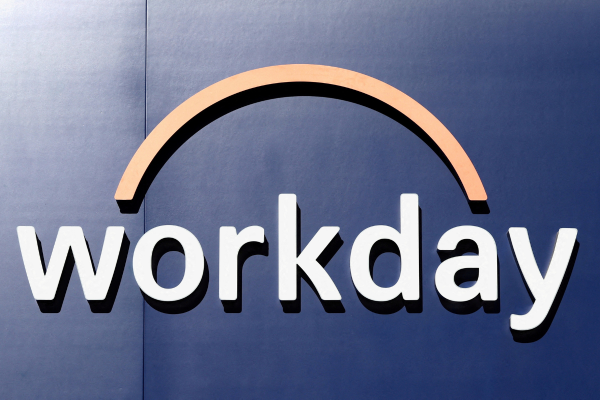Cloud dreams vs. cloud reality

Julian Broster at Apogee Corporation explains why print still matters
Across the public and private sectors, organisations have steadily embraced cloud solutions to optimise operations, enhance efficiency and reduce costs. However, while most IT applications have successfully transitioned to the cloud, organisations increasingly find their cloud ambitions stall around print.
Despite being one of the first IT functions, print has failed to keep pace with the rapid growth of cloud technologies and remains one of the last and most complex areas to transition. Without a thorough strategy or assessment covering all the options, organisations risk missing out on the final piece in the jigsaw of their cloud ambitions.
Adopting a ‘true’ cloud print environment is a complex undertaking, further complicated by a marketplace where suppliers often set high expectations that are difficult to fulfil. Businesses navigating this transition need more honest advice from experts about which cloud print solutions are right for them and what is realistic. For many businesses and public sector organisations with significant print requirements, getting cloud print right is vitally important.
Cost, and the growth of cloud
This year’s Flexera State of the Cloud report found 38% of organisations around the world are planning to migrate from on-premises workloads to SaaS applications such as cloud print. But as the report’s authors note, with more workloads migrating to the cloud, the result is greater attention on cost-management. Some 87% of respondents said their top metric for assessing progress against cloud goals was “cost efficiency/savings”.
Moving to cloud-based print certainly should reduce IT overheads, as there are no more on-premises servers requiring supervision and maintenance from in-house IT. It’s also an opportunity to make print use more flexible and scalable, giving organisations the ability to print from anywhere on an authenticated device or to add new functionality without the upheaval associated with upgrades for print software hosted on-premises.
Public and private sectors alike benefit from the increased cyber-security of a hyperscaler platform like Microsoft Azure, along with regular specialist print software updates that keep pace with evolving work requirements and new applications – making the whole process of printing simpler.
Pure cloud print is not right for all
Moving to cloud print offers so much more than cost-reduction in print services. Yet, while the end-stage for organisations ought to be near-100% cloud printing, making the move immediately is not suitable for everyone at present.
The reality is that while the benefits of cloud print are available to most organisations, they are not necessarily available to all – especially if IT infrastructure lacks the required robustness or experiences high latency. The adoption of cloud print should not, for example, significantly compromise the user experience by causing lengthy delays before documents are printed.
Unfortunately, heavy print users or those with more sophisticated requirements sometimes find the full range of functionality they were accustomed to when using on-premises print software is no longer available in cloud. Business continuity is also a concern because when there is downtime in the public cloud, organisations fear it may not be so readily fixed if they are not paying for top tier support.
Security in the cloud remains a major concern for organisations, but especially those in areas like healthcare, banking and financial services which are highly regulated and hold vast amounts of sensitive data. Many are still wary of migrating all workloads to the cloud, despite the vast investment in advanced security measures by the major cloud vendors.
Hybrid approaches to print work well
A hybrid approach may be more suitable for organisations that want the advantages of cloud print, but remain concerned about security, resilience and business continuity. If businesses are subject to data sovereignty rules, they may be wary of public cloud – for now at least.
The configurations of hybrid print set-ups should match each organisation’s precise requirements, the regulatory landscape they operate in and their appetite for risk. Universities and colleges, for example, are likely to have various unique requirements relating to academic specialisms. Each organisation is different and needs the solution best suited to its requirements and its infrastructure.
Skill needed for optimum print solutions
Achieving the right mix of services and applications from cloud and on-premises servers requires skill in design and implementation. Otherwise, the organisation could be left with an under-performing or costly solution. For a start, there are potential difficulties around integration of a cloud print SaaS model with an organisation’s existing systems.
The challenges are far from insuperable, but they do require a level of expertise to ensure optimal performance. For larger businesses with greater cloud maturity, this is likely to be easier, although it still requires attention to internal governance processes.
Data protection aside, larger organisations may feel hybrid cloud print enables them to retain the full range of print functions they need while gaining some of the flexibility and cost-reduction of cloud SaaS models.
Given all the significant factors at play, optimal configuration of print services in the era of cloud and SaaS applications demands care and attention. Organisations should not lose out on cost, flexibility and scale advantages of the cloud through excessive caution. But neither should they put their reputations and sensitive data at risk or enter into cloud contracts that turn out to be excessively costly.
Transparency is essential. Organisations need access to objective expertise so they can gauge what is best for them, ensuring they gain all the benefits of modernised, flexible and sophisticated print services.
Julian Broster is VP of Strategic Business Development at Apogee Corporation
Main image courtesy of iStockPhoto.com and Fahroni

Business Reporter Team
You may also like
Most Viewed
Winston House, 3rd Floor, Units 306-309, 2-4 Dollis Park, London, N3 1HF
23-29 Hendon Lane, London, N3 1RT
020 8349 4363
© 2025, Lyonsdown Limited. Business Reporter® is a registered trademark of Lyonsdown Ltd. VAT registration number: 830519543





